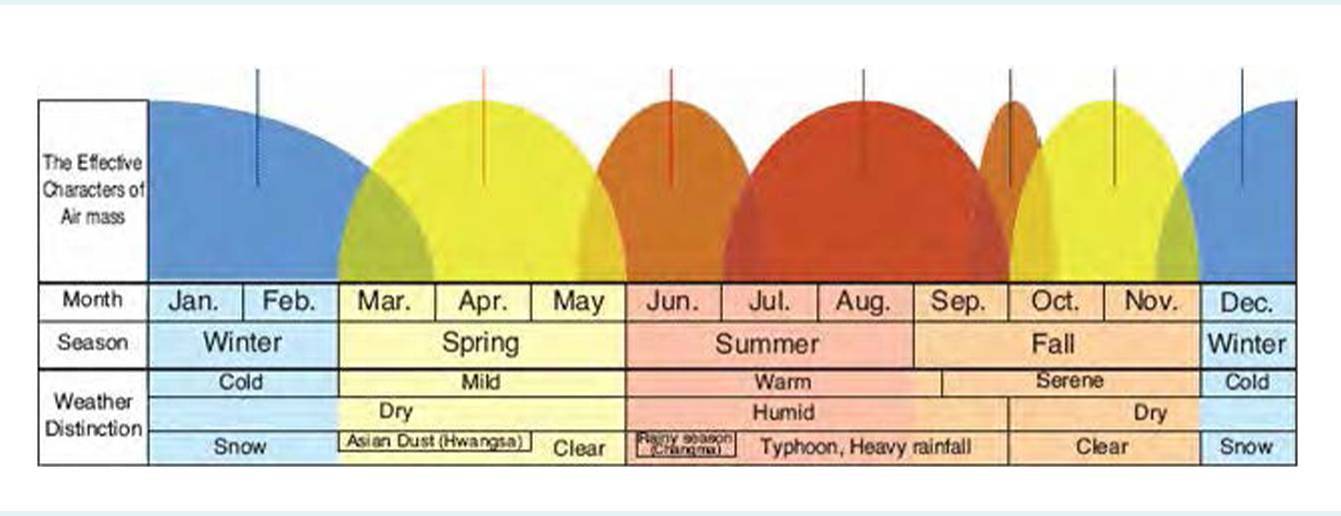The Republic of Korea lies in the temperate zone with four distinct seasons. Geographically, it is located in the middle latitudes of the Northern Hemisphere, on the east coast of the Eurasian Continent and also adjacent to the Western Pacific. It shows, therefore complex climate characteristics which reveal both continental and oceanic features. It has a wide temperature difference between summer and winter and much precipitation in comparison with that of the Continent. Also, it has distinct monsoon wind, a rainy period from the East-Asian Monsoon locally called “Changma”, typhoon, and while often heavy snowfalls in winter. It belongs to a relatively wet region due to much more precipitation than that of the world average.

The annual mean temperature ranges from 10 to 16ºC except in the high mountain areas. The warmest month is August, whereas January is the coldest one. The monthly mean temperature ranges from 23 to 27ºC in August and from -6 to 7ºC in January. The annual precipitation ranges from 1,000 mm to 1,800 mm in the southern part of Korea and from 1,100 mm to 1,400 mm in the central part. More than half of the annual precipitation falls during the Rainy season when a stationary front lingers across the Korean Peninsula for about a month in summer. The winter precipitation is less than 10% of the total annual precipitation.
The prevailing wind systems are southwesterly in summer and northwesterly in winter. The speed of the latter is faster than the former in general. During the transition period from southwesterly to northwesterly in September and October, a well-developed land-sea breeze emerges as a prominent feature. Humidity is highest in July, reaching 80~90% nationwide. On the contrary, the lowest means of monthly humidity are 30~50% in January and April. The relatively low humidity from September to October contributes to a plentiful agricultural harvest.
Rainy season, a part of the summer Asian Monsoon system, starts from the southern part of Korea in late June and gradually proceeds northward. It continues for 30 days on average, bringing frequent heavy rains and flash floods, and often leading to serious natural disasters. Two or three typhoons, out of about 28 generated annually in the Northwest Pacific, have influences on the Korean Peninsula from June to October.

ESTABLISHED 2015
#411-2, 22, Teheran-ro 87-Gil,
Gangnam-gu, Seoul,
Korea (06164) (City Airport)

George Lee

Vincent Jeong